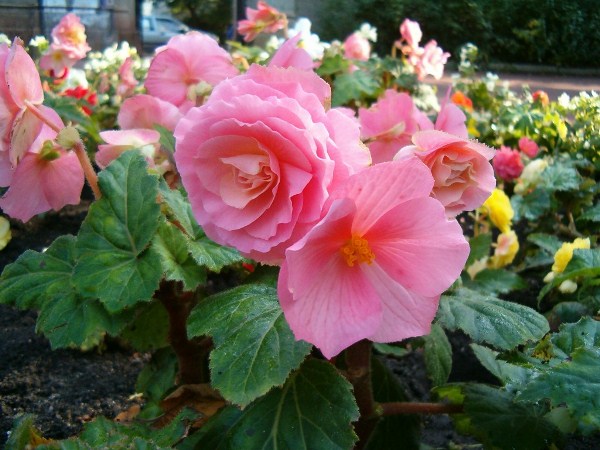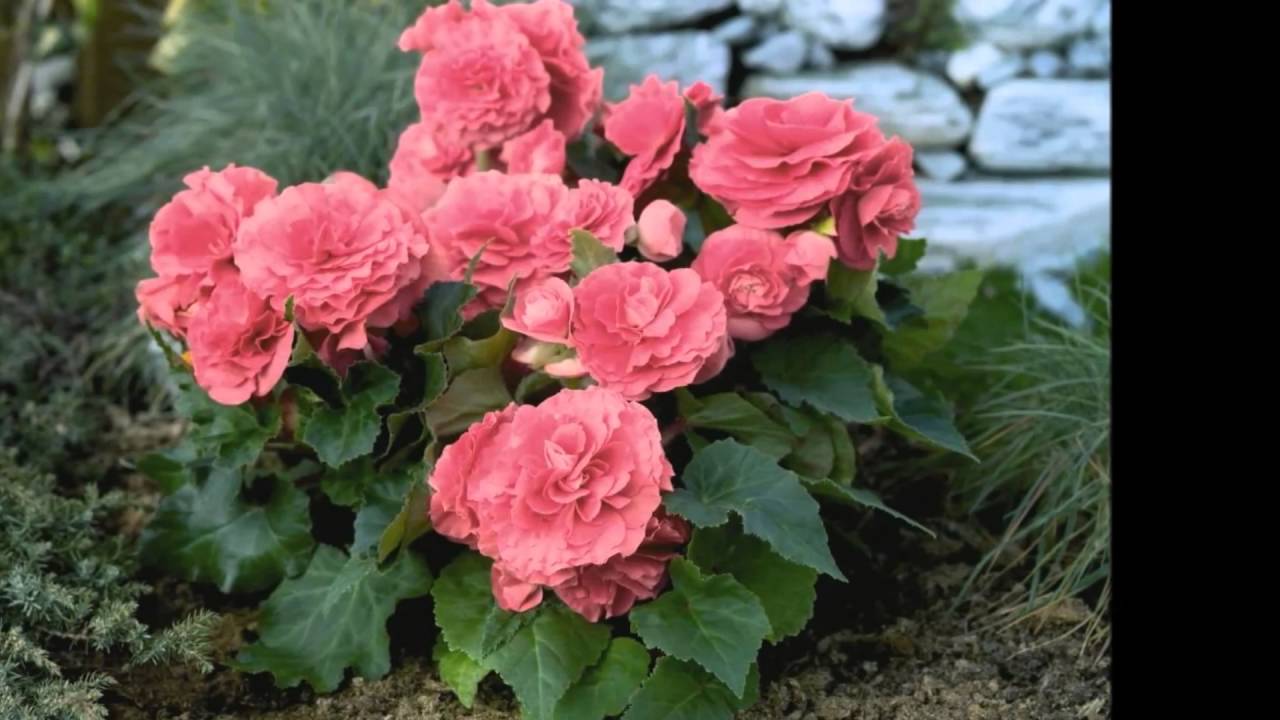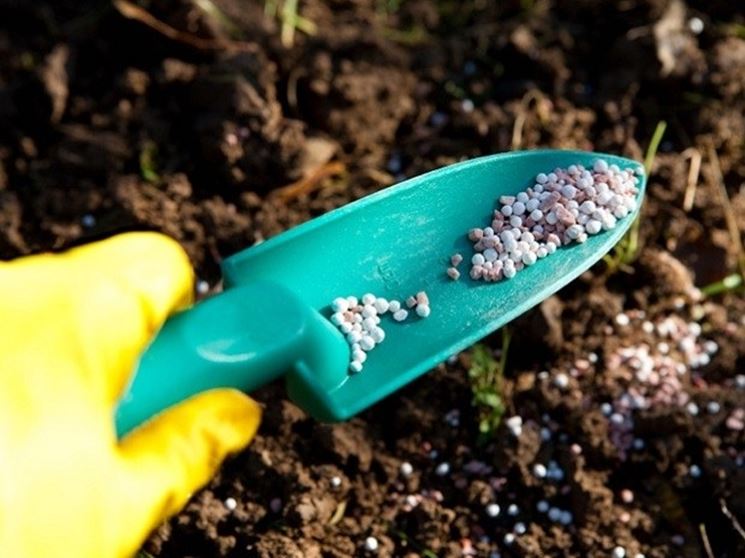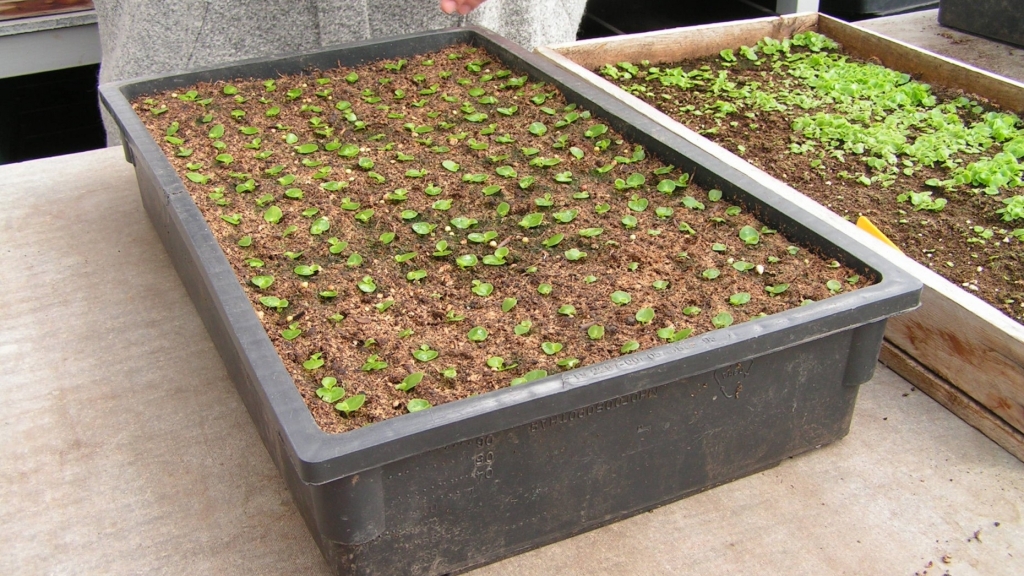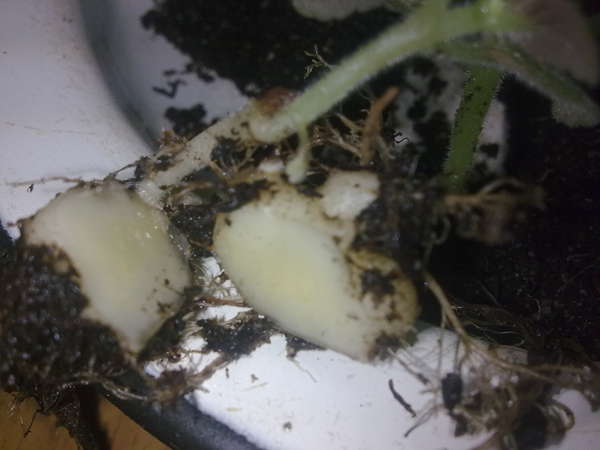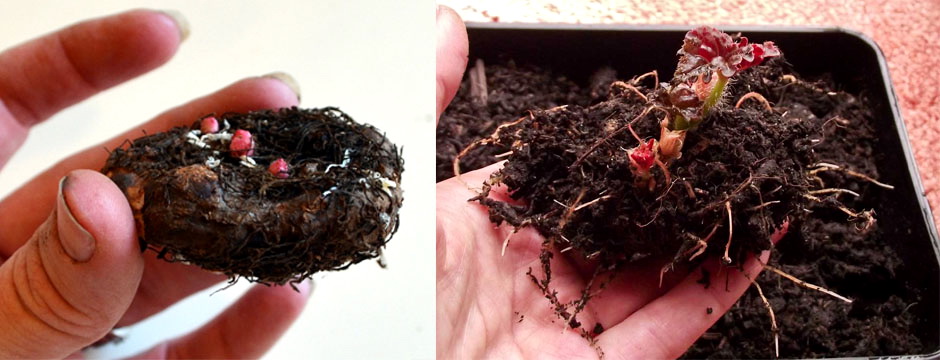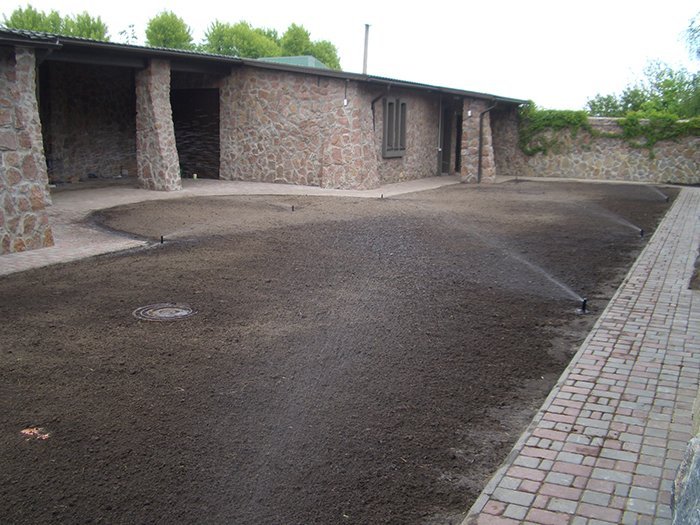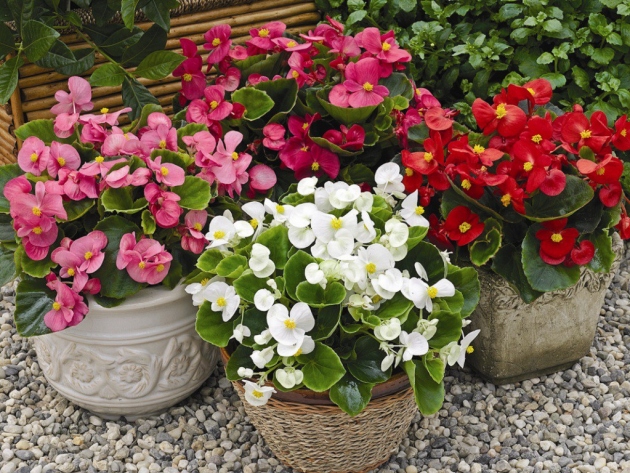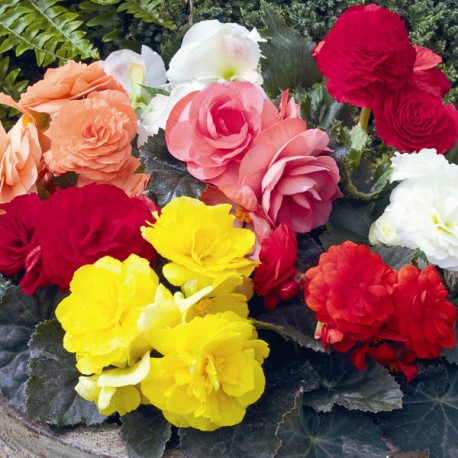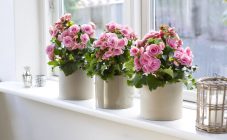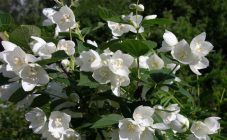Content:
- Tuberous begonia: planting and care in the garden
- Tuberous seed propagation of begonia
- Reproduction by dividing the tuber
- Planting tuberous begonias in a pot
- Top dressing for abundant flowering and basic rules for caring for begonia in the ground
- Prevention and treatment of tuberous begonia
- How to keep begonia tubers in winter
Having got to Europe, Russia, a resident of tropical countries, begonia was first grown in greenhouses. In Russia, the flower was already popular at the time of Bonaparte (for its pointed leaves it was called "Napoleon's ear") and decorated houses and winter gardens. A plant with a beautiful bush shape, delicate inflorescences, a wide color palette, species diversity (there are about 1000 species of begonias) attracted the attention of breeders.
In its natural environment, begonias can be found in tropical rainforests and areas with dry climates in Asia, Africa, South America. The flower is grown almost all over the world.
Tuberous begonia: planting and care in the garden
Despite the species and varietal diversity, all begonias grow better on fertile, slightly acidic, loose soil.
Choosing a place for tuberous begonia
Taking care of a flower begins with choosing the right planting site. The flower is photophilous, but at the same time does not like direct sunlight. A place in the garden with light shading will be optimal for him. Shrubs planted nearby can cast a shadow on the begonia, but the flower does not like the neighborhood with trees. Shading can be obtained by placing a canopy of mesh material over the flower garden.
A perennial flower does not deplete the soil, but it is recommended to grow it in one place for no more than 6-8 years. In order to give the plant a good start, the ground for the future flower bed is prepared in the fall - they dig up the soil of the flower garden, remove the roots of dug crops and debris, bring in humus (a bucket of 1 sq. M).
Watering the flower garden
Flowers do not like dry soil. During the growth of green mass, the flower needs abundant watering, the earth is moistened 1 time in 3 days. The preferred time for watering is morning.
The period from late May to mid-October for begonias is the flowering time. Abundant flowering and large peduncles need nutrients, they are applied by dressing (up to 3 times per season). Watering at this time is reduced by 1.5-2 times compared to the period of vegetative development. An indicator of a lack of moisture is the casting of begonias - when the plant receives less moisture, they wither.
Top dressing
The flower is fed with mineral fertilizers and organic matter 3 times per season. The first time is to feed the plant immediately after planting in open ground, the rest during the season. During the laying of the buds, fertilizers with a high content of phosphorus and potassium are applied, during the flowering period - a nutritious composition of complex mineral fertilizers. Since August, nutrient mixtures are stopped so that begonia has time to prepare for winter.
Pruning
Proper care promotes the growth of the bush, and its shape is corrected by cutting off the shoots. The first pruning is done when the stems are up to 8 cm.Excess lateral shoots are removed, giving the bush the desired shape. With a stem length of about 12 cm, the tops of the shoots are pinched, after which the stems do not stretch in length, but grow, becoming lush.
Tuberous seed propagation of begonia
The flower is propagated by dividing the tuber, cuttings, seeds. Growing over a large area (large flower beds in the garden, large areas of greenery in parks, squares) requires a lot of planting material. The best way to get it is by sowing seeds.
For sowing seeds, prepare a box or container with nutritious moistened soil and expanded clay or other drainage material at the bottom. When sowing seeds, do not sprinkle the sowing on top of the earth.
You need to plant seeds in the middle of winter, before early February, so that the grown seedlings have time to get stronger, and the flower blooms on time, this season. The box is covered with plastic wrap or glass and placed in a well-lit room, the air temperature in which is about + 25 ° C. After 2 weeks, shoots appear. When 2-4 leaves appear on the seedlings, they dive. When winter ended and good weather without frost was established (in central Russia it is not earlier than May), it was time to plant seedlings in open ground. It is planted by burying the roots so that the green part of the plant is on the surface. Between neighboring tuberous begonias maintain a distance of 20-25 cm.
Reproduction by dividing the tuber
This method is used at home and for propagation of rare varieties of plants in nurseries.
Tuber preparation
Reproduction assumes the presence of large, over 6 cm in size, bulbs without cracks, mold, overgrowth. You can determine a healthy tuber by weight - it is dense and heavy, unlike light dried bulbs.
It is optimal to start breeding begonias with tubers in January, when they are in a state of physiological rest. The onion is cleaned of rotten sprouts and placed for 40-45 minutes in a 1% solution of potassium permanganate or for half an hour in a solution prepared using a fungicide. The dried onion is cut into several parts, making sure that there are live buds in each segment. The slices are sprinkled with charcoal.
Box and earth
To grow a flower for planting in open ground, prepare a box with soil (it can be prepared by mixing 2 parts of leafy earth with humus, peat, sand, taken in 1 part). A pallet is required - begonias will need to be watered abundantly. The container is filled with earth, leaving 3-4 cm from the edge.
Planting tuber segments
For the segment of the bulb, which is planted in a separate container, a small depression is made in the center in the ground. In a box for several plants, the soil is deepened at a distance of 10 cm and 5 cm away from the walls of the box. For root germination, part of the tuber is placed with the convex side deep into the soil. The concave part remains on the surface for the plant to grow upward. When sprouts appear on the planted bulb, they are lightly sprinkled with earth.
Environmental conditions
The bulb will adapt more quickly to growing conditions in the open field if it is not created in greenhouse conditions. For germination, it is recommended to choose a room:
- bright, but without direct sunlight;
- ventilated, but without drafts;
- with temperatures from +15 to +17 ° С.
Sprout care
The soil needs to be watered so that it is always moderately moist, but not excessively wet.If there is too much sun in the room, create partial shade by curtains of windows or placing a box of tubers in the shade of plants. With proper care, sprouts hatch after 5-7 days, after the next 15-20 days 2-3 leaves appear. In a month, there may be the first flowering.
In order for young plants to be adapted to environmental conditions, they are taken out for a short time to the garden or to an open balcony. Planting them in a flower garden - in the spring, when there is no longer a threat of frost. The plant is planted at a distance of 15-20 cm from each other, the roots are sprinkled with a layer of earth 2 cm.
Planting tuberous begonias in a pot
When growing begonias as a houseplant, questions arise - what kind of pot does a flower need, what care does home begonias require, how to properly grow begonia from a tuber in a pot?
Healthy bulbs are chosen for planting. Any flower pot is suitable - plastic, ceramic, clay. It is important that it is not large (in a flower planted in a large container, the root system develops to the detriment of the growth of the ground part). A pot with a height and diameter of 8-10 cm will be optimal in size. There should be holes at the bottom of the vessel to drain excess water, a layer of expanded clay, pebbles, and other drainage is also required.
The soil for room tuberous begonias can be bought ready-made or prepared by mixing peat, leafy soil, sand in a ratio of 2: 2: 1, or 3 shares of leafy soil and 1 part each of sand, peat, humus. You can add charcoal to the composition.
The bulb is kept in a fungicide solution for half an hour before planting in a pot. The dried tuber is placed in a small hole made in the center of the pot, with a notch up. It is not necessary to deepen and sprinkle the tuber with earth - only 2/3 of it should be in the soil. After planting, the ground is watered.
When sprouts appear in a week, the tuber is sprinkled with earth.
Top dressing for abundant flowering and basic rules for caring for begonia in the ground
Tuberous begonia requires regular and abundant watering, fertilizing. The flower is fed with mineral and organic fertilizers. The main mistakes in caring for him were:
- insufficient watering and excessive soil moisture;
- oversaturation of the plant with mineral fertilizers or organic matter;
- feeding the flower immediately after planting or transplanting (the transplanted begonia, so as not to slow down the development of the root system, is fed only a month after planting);
- making the ailing flower dressings in large doses (you need to take care of the ailing begonia by gradually increasing the dose of nutrient mixtures);
- are destructive to the flower feeding at rest.
Prevention and treatment of tuberous begonia
If planting and caring for tuberous begonia is correct, the flower grows healthy and demonstrates its decorative effect as much as possible. But begonias have pests - aphids, scale insects, whiteflies, thrips, nematodes that cause flower disease. For pest control, special formulations for treating begonias are used, they can be found in gardening stores.
The flower is susceptible to fungal diseases: powdery mildew, gray mold, bacterial and ring spot. The reason for their occurrence is a deviation from agrotechnical norms - excessive watering, inappropriate composition and acidity of the soil, improperly applied fertilizing, poor storage of tubers.
Treatment of fungal diseases is carried out by spraying on the sheet with fungicides, Bordeaux liquid, and copper sulfate solution.
How to keep begonia tubers in winter
Begonia cannot survive the winter outdoors, so its tubers are dug up in the fall. Storing begonia bulbs requires following simple guidelines:
Begonia bulbs are dug up with the arrival of the first frost, working carefully so as not to damage. A garden fork or scoop is used.The tubers are sorted out, the stems are cut, leaving 2-3 cm from them on the bulb and, without clearing from the ground, are placed for drying in boxes, which are taken out into a warm, dry, ventilated room. After 2 weeks, the tubers are cleaned of soil and the remains of the stems and placed, covered with sawdust or dry peat, in plastic bags or, sprinkled with sand, in a box. The packed bulbs are then placed in the selected storage location.
The main condition of the environment is coolness (temperature 5-9 ° C) and dryness (room humidity 80-85%). You can save the planting material in a ventilated cellar or basement, on a refrigerator shelf.
If you take care of begonia correctly, it will become the queen of flower beds, giving the garden originality. And the main thing in care is timely watering and top dressing.
